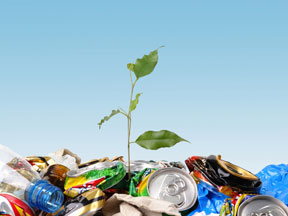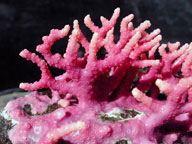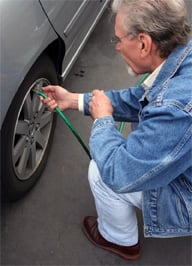Tuesday, November 26, 2013
Hurry up friends; last 5 days are remaining for participation
Thursday, November 21, 2013
Saving life of Scorpion
Sunday, November 17, 2013
Earth-Friendly Tips for Motorists
Turning Mountains of Plastic Into Gallons of Fuel
Green Living: A Plus For Our Planet
Want to Save the Earth? It’s All in the Reusable Bag
Children Benefit From Seeing Sealife
Saving the World’s Ocean — One Coral at a Time
Buying Appliances? Think Beyond Purchase Price
Many consumers don’t realize that the true cost of an appliance is more than the initial purchase price. In fact, by selecting the most energy-efficient solutions, consumers can reduce their energy bills year after year by 20 to 30 percent. These products incorporate advanced technologies that use up to 50 percent less energy and water than standard models. Considering that the EPA estimates the average household spends $2,200 on energy bills each year, these savings can really add up.
To find the most energy-efficient appliance and maximize your savings, follow these simple steps.
Step 1: Remember that there are two costs associated with an appliance: the price you pay for it and the cost you incur to run it.
Step 2: Look for the Energy Star label. Just because the product details might have “energy efficient” listed, it doesn’t mean it’s been engineered to be the most efficient. Energy Star-certified products have been independently tested to meet rigorous standards for energy efficiency and quality. That means they’ll give you the same (or more) service for less energy while helping to protect the environment. They also offer improved quality and durability. With products in more than 60 categories, there are many Energy Star options to choose from.
Step 3: Read the yellow EnergyGuide label. This standard label, displayed on most appliances, will tell you how much energy the product uses, along with an estimated annual operating cost. By comparing these two figures on similar models — even those with Energy Star labels — you’ll be able to identify the most energy-efficient option. Keep in mind that some products that are the “most energy efficient” won’t always have an Energy Star label.
Step 4: Recycle your old appliance. Ask your retailer if it has a recycling program. If not, recycling centers or local non-profits in your area might have recycling programs that make it easy to dispose of old units. Some utility companies even offer incentives to pay for old appliances you no longer use.
For more information, go to nyserda.ny.gov/save-newsusa.
Save Money, Help the Environment With Properly Inflated Tires
Still, conducting monthly tire pressure checks is one of the smartest driving moves you can make. Not only are properly inflated tires critical for vehicle safety, they also increase fuel efficiency and reduce carbon dioxide emissions.
Increase Fuel Efficiency
According to the U.S. Department of Energy, 3.56 million gallons of gasoline are wasted every day due to incorrectly inflated tires. The good news is you can improve gas mileage just by keeping tires inflated to the proper pressure. In fact, one study showed that if gas costs $3 per gallon, proper tire pressure can save you up to $432 at the pump each year.
Reduce Carbon Dioxide Emissions
According to the U.S. Environmental Protection Agency, the typical car in the United States releases more than five tons of carbon dioxide into the atmosphere each year. By keeping tires properly inflated, you can reduce your vehicle’s “carbon footprint” by an average of 327 pounds per year. Because a tire can lose up to half its air pressure without appearing to be under-inflated, you cannot rely on a tire’s appearance to determine whether it’s properly inflated or not.
Tire Pressure Tips From Schrader
To help ensure your tires are properly inflated year-round, here are some tips from Schrader, the inventor and leading manufacturer of TPMS worldwide:
* Check the pressure in all four tires — and the spare tire — monthly with an accurate tire gauge, and always check tire pressure before a long road trip.
* The “right” pressure for your vehicle’s tires can be found in the vehicle’s manual or on the driver door edge, glove box or fuel door. Do not follow the information listed on the tire sidewall.
* For the most accurate reading, tires should be checked when they are cool.
* Always remember to replace the valve cap.
For more tips, including what to do if the TPMS symbol illuminates on your dashboard, visit TPMSMadeSimple.com. Schrader created the site to help educate drivers about TPMS and the importance of proper tire pressure
How to Keep Wildlife in the Wild
Dr. Jorge Parada, medical spokesperson for the National Pest Management Association (NPMA), urges parents to remind their children of how dangerous animals can be, particularly wild ones. “We often see parents bring children to the hospital for fear of rabies exposure or some other health concern associated with pests. Children are notorious for admiring wildlife too closely and being exposed to potentially harmful pathogens and bacteria in doing so.”
With temperatures dropping and seasons changing, many pests will be in search of new sources of food, water and shelter as these items become less readily abundant than in warmer months. If not properly protected, homes and yards provide welcoming environments for pests. Rodents, raccoons, squirrels and bats are some of the more common nuisance wildlife species likely to cross over into homeowners’ personal spaces in the coming weeks and months.
NPMA offers the following tips to help keep nuisance wildlife from inhabiting your property:
• Seal cracks and holes on the outside of the home, including entry points for utilities and pipes.
• Keep tree branches and shrubbery well trimmed and away from the house.
• Don’t leave pet food or water outdoors.
• Hang birdfeeders as far back in the yard as possible.
• Keep basements, attics and crawl spaces well ventilated and dry.
• Store garbage in sealed containers. Make sure lids on outdoor trash receptacles fit snugly.
• Replace weather-stripping and repair loose mortar around basement foundation and windows.
• Add chimney caps to prevent wildlife from entering.
Wildlife can be appreciated from afar, but if it comes into or close to a home, it becomes nuisance wildlife. If you suspect a problem with such pests, play it safe. Contact a qualified pest professional for additional advice and treatment if necessary
Turn Your Backyard Into an Outdoor Resort
Save Time and Money Buying Your Next Refrigerator
Small Investments Lead to Reduced Energy Bills
 Next time you’re out running errands, keep these five items on your list of things to buy, and you could start seeing the savings in no time:
Next time you’re out running errands, keep these five items on your list of things to buy, and you could start seeing the savings in no time:1. Window insulation kit. Properly sealing drafty windows not only increases the comfort of your home, but may also significantly decrease your energy bills. Insulating windows is an inexpensive and effective way to keep warm air in and cold air out. Choose a product that can easily fit a variety of window sizes, such as the Roll-On Window Kit by Duck Brand, which requires no measuring and minimal cutting and is practically invisible.
2. Programmable thermostat. A pre-programmed device allows you to control the temperature of your home year-round. According to Energy Star, homeowners can save around $180 a year by properly setting their programmable thermostats and maintaining those settings.
3. Compact fluorescent light bulbs (CFLs). Switch out incandescent light bulbs with CFLs, which use at least 75 percent less energy. You can find CFLs that last up to 10,000 hours – about 10 times longer than standard incandescent light bulbs. Try the n:vision line, which includes soft white, bright white and daylight energy-efficient bulbs, so you can find just the right light for any room in your house.
4. Insulation. Inadequate insulation in your home may allow cool air to escape in the summer and warm air to be lost in the winter, potentially overworking your heating and cooling systems. Add insulation in the attic, crawl spaces, ceilings and exterior walls to help save energy, reduce your operating costs and keep your home comfortable.
5. Furnace filters. Replacing or cleaning furnace filters once a month during the winter will help your heating system operate more efficiently and can keep harmful bacteria, mold, viruses and pollen out of the air. Furnace filters are available in multi-packs, so you can always have one on-hand. You could also consider installing a permanent furnace filter, which is washable and cuts down on waste by eliminating the need for throwaway fiberglass screens.
For a minimal investment, you could see hundreds of dollars in energy savings throughout the year. One trip to the store and a few minutes at home are all it takes to make small changes that really add up.
Three Ways the Oil Spill May Threaten Human Health
Overfishing Leads to Troubled Waters for Many Species
6 slices thick-cut bacon
3 cups yellow onion, diced
1 1⁄2 cups celery, diced
3⁄4 cup flour
2 tablespoons Old Bay seasoning
6 cups chicken stock
2 large baking potatoes, cut into bite-size pieces, boiled and drained
1 15-ounce can whole kernel sweet corn, drained
1⁄4 cup fresh parsley, finely chopped
1 cup thinly sliced green onion, divided
1 cup heavy cream
1⁄2 teaspoon hot sauce
Salt and pepper to taste
On the Road to Greener Living With Eco-Friendly Water Bottles
On the Road to Greener Living With Eco-Friendly Water Bottles
For decades, we have been urged to be kind to Mother Earth, leave our environment better than when we were here, to live “greener.” This has gotten easier with the arrival of recycling.
After all, who doesn’t feel good about recycling their plastic water bottle? The problem, however, is that many of these bottles don’t make it to the recycling bin and instead end up in landfills that are already overrun with too much trash.
Enter Las Vegas-based Alkame Water, a company that is combatting this problem by creating a water bottle that is designed to be biodegradable in landfills, as well as recyclable with other plastics.
And while much has been written recently on the dangers of freezing plastic water bottles, or conversely, drinking water from a plastic bottle that has been sitting in the heat (to do so is to possibly ingest cancer-causing chemicals), Alkame bottles do not require special storage, will not break down by heat, light, moisture or stress, and are BPA-free as well as 100 percent recyclable.
To accomplish what few others have been able to do, Alkame has enlisted BioSphere—a company dedicated to “giving back to society through global awareness education”—to create its bottles by using a material that is structured in such a way that once the bottle is in a landfill or composter, it degrades from within as well as on the surface. This composition is designed to speed up the biodegradation process by increasing the overall area that can decompose.
“The qualifications in order to be considered biodegradable are that the material must be scientifically proven to break down completely and return to nature in a short time frame,” BioSphere notes on its website.
No doubt, biodegradable plastics will be but one way that companies can reduce their carbon footprint, which is part of Alkame’s overall philosophy of health, for both the environment and for the individual.
Alkame’s formula includes oxygenation that improves aerobic capacity and enhances energy, antioxidants that can boost the immune system, and mild alkalinity for more effective hydration.
Alkame Water is a wholly owned subsidiary of Pinnacle Enterprises, Inc. (OTCBB: PINS) (OTCQB: PINS). For more information on Alkame Water and how you can get it delivered to your home or office, visit www.alkamewater.com.
Get Better Heat, Save Money by Going Hybrid This Winter
Brazilian environmentalists tell residents to urinate in shower to save water
Environmentalists in Brazil are urging the country's residents to urinate in the shower while washing themselves, to help conserve water and save the rainforest. Television ads being aired in the country claim that by doing so, the nation could save over 1,000 gallons of water per household each year.
SOS Mata Atlantica ran the ad campaign in an attempt to use comedy to get people to reduce the amount of water they use. "[The ad is] a way to be playful about a serious subject," said Adriana Kfouri, a spokesperson for Atlantica.
The animated ad narrated by children shows people, including a trapeze artist, an alien and dancers, all taking a shower while at the same time, urinating in it. The ending of the ad then states, "Pee in the shower! Save the Atlantic rainforest!"
Ken Livingstone, former mayor of London, England, proposed a similar campaign in 2006. He said urine should be classified as a "green waste" and that "there is no earthly reason that you need to flush the loo if you have merely urinated. That's a huge saving of water."
From Wikinews, the free news source you can write!

Contributions must be attributed to Wikinews; see Terms of use for details.
Copyright on images may vary, please check individual image pages prior to duplication.



















